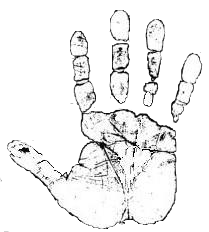MAKE AN APPOINTMENT TODAY!
Work-Related Slips, Trips, & Falls
Falls are a common source of workers compensation injuries, which lead to approximately 9 million ER visits per year. The causes can be divided into two categories, trips and slips. Trips occur when an object in the pathway disrupts the walking gait of the person. Slips are caused when the friction between the shoe and the floor is insufficient to prevent the foot from sliding.
The biomechanics of a fall can be correlated with the patient's fall scenario and compared to the patient's injuries to determine if they are consistent. This is something workers compensation insurers look at closely. Commonly, a falling person will try to "catch themselves'" and in the process fall on an outstretched hand, breaking wrist bones (i.e. distal radius, ulna, scaphoid), elbow bones (i.e. olecranon, radial head, distal humerus), or shoulder. Sprains, dislocations and ligamentous tears can occur with or without accompanying breaks.
The biomechanics of a fall can be correlated with the patient's fall scenario and compared to the patient's injuries to determine if they are consistent. This is something workers compensation insurers look at closely. Commonly, a falling person will try to "catch themselves'" and in the process fall on an outstretched hand, breaking wrist bones (i.e. distal radius, ulna, scaphoid), elbow bones (i.e. olecranon, radial head, distal humerus), or shoulder. Sprains, dislocations and ligamentous tears can occur with or without accompanying breaks.
Slips and Falls
Slip and fall injuries occur when there is not enough friction between an individual's foot and the floor, resulting in sliding motion, imbalance and fall. The nature of this fall is such that an individual invariably ends up landing on their bottom or their back with hands, wrists and elbows suffering the most impact.
Trips and Falls
An individual will trip and fall when encountering an unnoticed raised surface or an object while walking or running. Due to a delay in the trailing leg moving forward to position the foot in the direction of travel and to balance the upper body, a person will tend to fall forward on an outstretched hand.
Stumps and Falls
Stump and fall injuries occur when a foot catches or snags on an inconspicuous defect in flooring causing a person to stumble, disrupting normal gait. Falling person will try to "catch themselves'" and in the process fall on an outstretched hand.
Forced-Rotation Type Falls
Forced-rotation falls occur when an individual's foot encounters any change in the surface elevation that causes him to turn the same foot and ankle in such a manner as not to be able to support his body weight.
Disclaimer and Privacy
IZADIHAND.COM © 2011-2022 Kayvon David Izadi MD - All Rights Reserved
Webmaster
IZADIHAND.COM © 2011-2022 Kayvon David Izadi MD - All Rights Reserved
Webmaster
